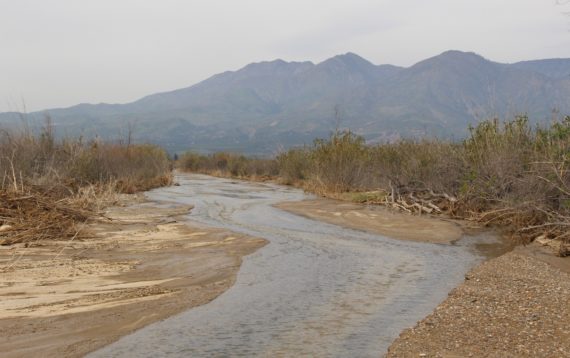Location: Ventura County
Project Type: Restoration, Restoration Implementation
Status: Current
Habitat Type: Riparian
Cost: $4,400,00
Funding Gap: $4,400,000
Area Affected: 265 acres
Project Footprint: 265 acres
Area Affected: .6 stream miles
Project Footprint: .6 stream miles
Assembly District: 37
Senate District: 19
Congressional District: 26
Project Lead/Grantee:
Santa Clara River Conservancy, Shawn Kelly
 For more information, visit scwrp.org
For more information, visit scwrp.org
The project will implement the restoration plan for a large wetland and riparian complex along the Santa Clara River, a significant coastal river in southern California that still retains its natural hydrology and provides critical habitat for endangered species including least Bell’s vireo, Southwest willow flycatcher, and steelhead trout. The project location is the site of a historical wetland complex (over 400 acres) supported by artesian upwelling and river flows that was converted to agriculture and a State fish hatchery in the 1940’s.
The objective is to restore a mosaic of riparian and wetland habitats and re-establish the plant diversity and habitat connectivity that has been lost through human degradation and invasion of non-native weeds. Specifically, the project will re-establish 190 acres of willow-cottonwood forest, southern oak riparian, emergent marsh habitats, wet meadow, and enhance an additional 70 acres of riparian scrub along the active river channel. Restoration will improve and expand available riparian and aquatic habitat for fish and wildlife, including over ten species with listed or special status designations.
Reestablishing riparian forest lost to agriculture and the historic 2012-16 drought will enhance flood protection for surrounding communities, improve water quality by trapping sediment and removing excess nutrients, and increase groundwater recharge by reducing and slowing runoff and increasing recharge surface area. Further, the project will reduce fire risk by replacing flammable invasive plants (such as giant reed/Arundo) with native trees that are relatively fire-resistant owing to high moisture content and relative high humidity within riparian stands. Lastly, drought tolerant native plant species and genotypes will be established to improve ecosystem resiliency to drought and climate change. The project has the added benefit of contributing to another regional priority, to protect and restore anadromous and other native fish habitat. This is a collaborative project to be implemented by SCRC and UC Santa Barbara, with input from CDFW.

